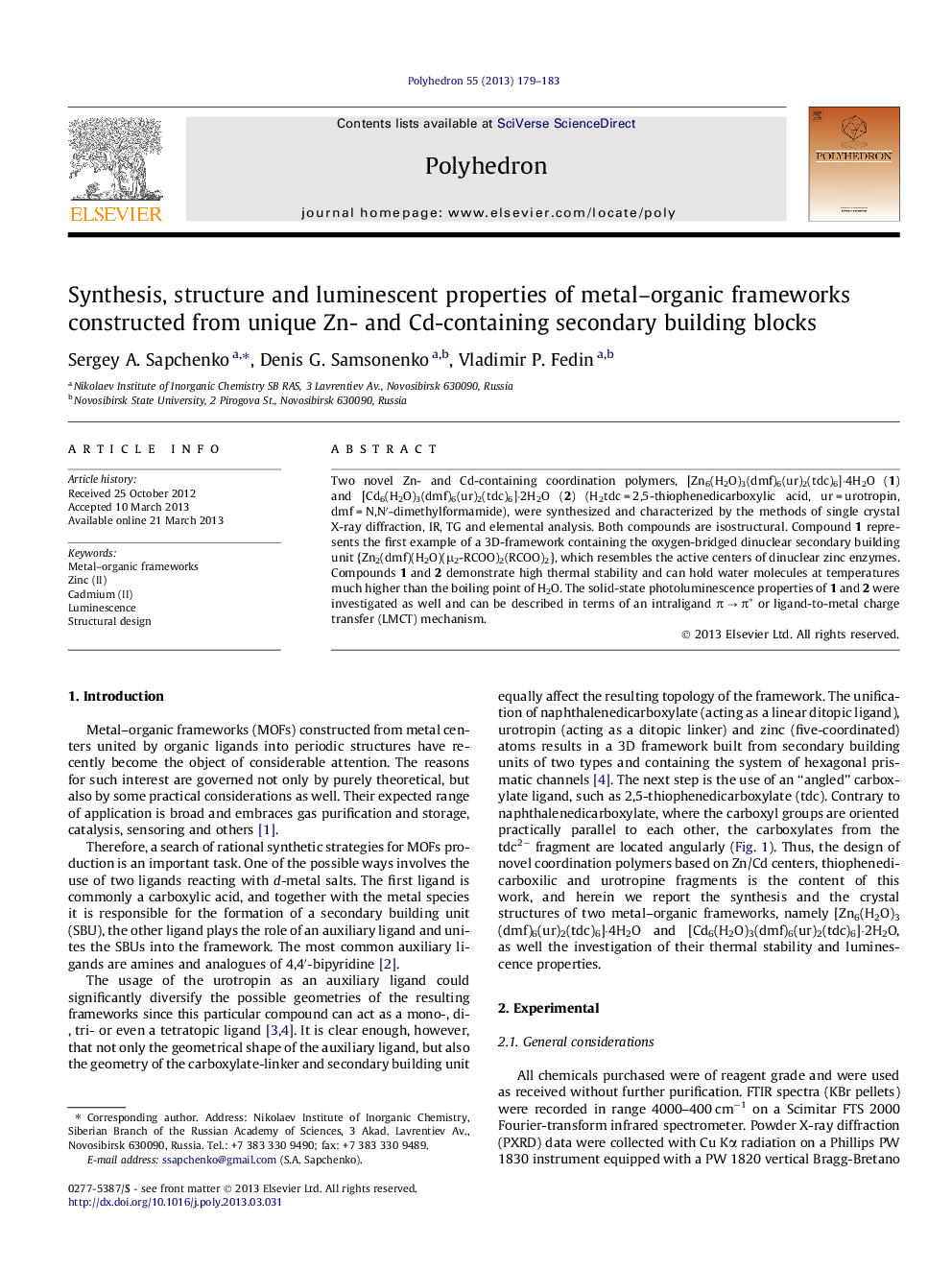| Article ID | Journal | Published Year | Pages | File Type |
|---|---|---|---|---|
| 1338438 | Polyhedron | 2013 | 5 Pages |
Two novel Zn- and Cd-containing coordination polymers, [Zn6(H2O)3(dmf)6(ur)2(tdc)6]·4H2O (1) and [Cd6(H2O)3(dmf)6(ur)2(tdc)6]·2H2O (2) (H2tdc = 2,5-thiophenedicarboxylic acid, ur = urotropin, dmf = N,N′-dimethylformamide), were synthesized and characterized by the methods of single crystal X-ray diffraction, IR, TG and elemental analysis. Both compounds are isostructural. Compound 1 represents the first example of a 3D-framework containing the oxygen-bridged dinuclear secondary building unit {Zn2(dmf)(H2O)(μ2-RCOO)2(RCOO)2}, which resembles the active centers of dinuclear zinc enzymes. Compounds 1 and 2 demonstrate high thermal stability and can hold water molecules at temperatures much higher than the boiling point of H2O. The solid-state photoluminescence properties of 1 and 2 were investigated as well and can be described in terms of an intraligand π → π∗ or ligand-to-metal charge transfer (LMCT) mechanism.
Graphical abstractTwo new isostructural 3D coordination polymers, [Zn6(H2O)3(dmf)6(tdc)6(ur)2]·4H2O and [Cd6(H2O)3(dmf)6(tdc)6(ur)2]·2H2O, have been prepared and characterized. Their structures have a rare topology and contain unique dinuclear secondary building units. Both compounds demonstrate high thermal stability and show luminescent behavior.Figure optionsDownload full-size imageDownload as PowerPoint slide
